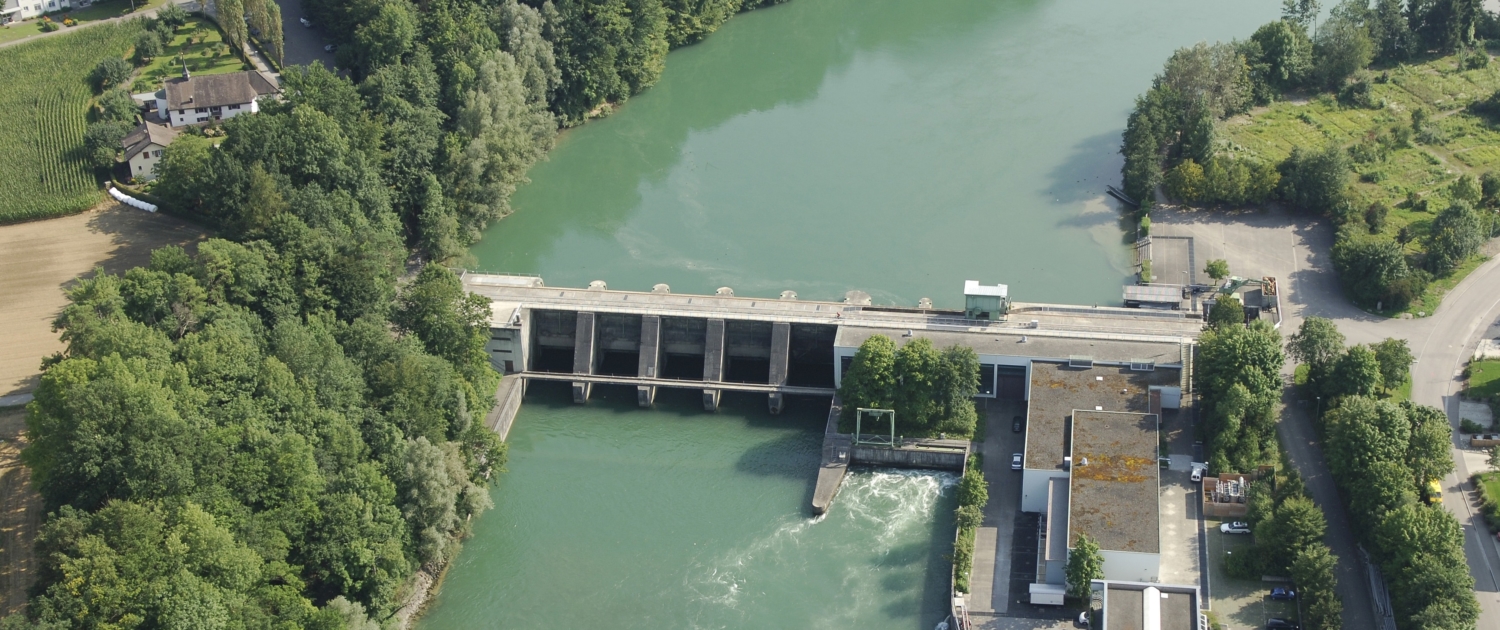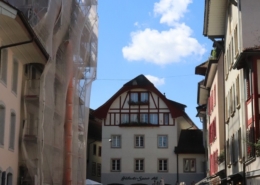How large can the flood discharges be at the locations of the 19 dams in the Aare catchment area? Can such large volumes of water still flow down the river bed at all, or does the water flow around the dams? Two follow-up studies commissioned by the Swiss Federal Office of Energy provide answers. They clarify the findings of the EXAR study ("Extreme Floods on the Aare"), which was published in February.
The "Extreme Floods on the Aare" (EXAR) baseline study provides a comprehensive set of data for estimating flood hazards in the Aare catchment area. The catchment area covers almost a third of the whole of Switzerland. Feeder rivers such as the Saane and the Orbe in the west or the Limmat and the Reuss in the east are also part of the catchment area. For this area, it has been calculated how much water is collected during a flood that occurs only every 100, 1000, 10,000 or even only every 100,000 years.
However, the data from the EXAR study cannot be used to directly assess the safety of the dams in the catchment area. For this purpose, this extensive data set had to be evaluated for the locations of the 19 dams. The following two questions will be answered by the two follow-up studies.
- What is the dimension of an exceptional or extreme flood at the respective dam?
- Does all the water remain in the river bed or does part of it flow past the dam?
A mathematical procedure was developed to select a few representative flood events from the EXAR data set, which contains hundreds of extreme floods, for each of the 19 impoundments. These selected floods can be used to reliably assess the safety of the dams. Instead of hundreds of different floods, the behaviour of the facilities only has to be investigated for a few floods.
In addition, hydraulic simulations were used to calculate which path the water would take during these events. The simulations show that in the case of the Niederied, Aarberg, Flumenthal, Rupperswil-Auenstein and Klingnau dams, part of the water leaves the river bed further upstream in the event of an extremely rare flood and therefore does not flow through the weir. In the case of the other facilities, it can be assumed that all the water will flow into the dam even in the event of an extreme event.
These findings are relevant for the safety verification that every plant operator must provide. Of importance is the amount of water that actually arrives at the dam. By providing proof of flood safety, operators demonstrate that their facilities are safe and can withstand flood events.
What exactly the operators have to prove:
- In the event of an extraordinary flood (technically known as a design flood): The water can be discharged in an orderly manner, even if the largest spillway (such as an entire weir field) is out of operation or blocked. The system suffers no damage and is not overflowed.
- In the event of an extreme flood (technically known as a safety flood): The installation may suffer some damage. However, the plant may not break.
The results of the two follow-up studies are now being compared with the bases previously used to demonstrate flood safety. If the hazard at individual plants is higher than currently assumed, the operators must revise the corresponding proofs. If the safety requirements for individual plants are not met, it may even be necessary to take structural measures. As the supervisory authority, the SFOE ensures that the dams in Switzerland meet the safety requirements in accordance with the current state of science and technology.
Markus Schwager, Programme Manager, Dam Safety Research Programme and Brigitte Mader, Communications, Swiss Federal Office of Energy
 Copyright: VBS
Copyright: VBS
 Neue Ansätze für die Mobilität von morgen
Neue Ansätze für die Mobilität von morgen  Benedikt VogelSanierungswillige kompetent begleiten
Benedikt VogelSanierungswillige kompetent begleiten  ShutterstockAider à améliorer l’efficacité des entreprises
ShutterstockAider à améliorer l’efficacité des entreprises  ShutterstockEnergieetikette: Grossteil der Elektrogeräte korrekt deklariert
ShutterstockEnergieetikette: Grossteil der Elektrogeräte korrekt deklariert 
 Pixabay
Pixabay Benedikt Vogel
Benedikt Vogel
Dein Kommentar
An Diskussion beteiligen?Hinterlassen Sie uns Ihren Kommentar!